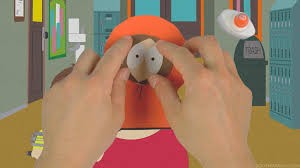After the big jumble of text and image in “Asterios Polyp”, I found the organized layout and simple images of Tan’s “The Arrival” very refreshing. I loved the highly detailed and emotional illustrations. They were so intricate that the book really didn’t need words, and perhaps would not have the same sort of emotional impact if there were words to go along with those images.
Something about the illustration style reminded me of the illustrations in “The Polar Express” by Chris Van Allsburg. While “The Polar Express” still has words to go with the images, the careful composition and emotional impact of the illustrations were what really drew me to the book as a child. I wonder how “The Polar Express” would read if you only looked at the images and ignored the text.
It was also really interesting to watch Tan’s “The Lost Thing” in class. I enjoyed hearing the story rather than reading it while viewing the animation. However, I wonder how it would have worked with just the sound effects and no narration, sort of like “Walle” the movie. I enjoyed watching/hearing/reading/viewing all these different works, and am left curious about how the artist decides how their illustrations will interact with text.


